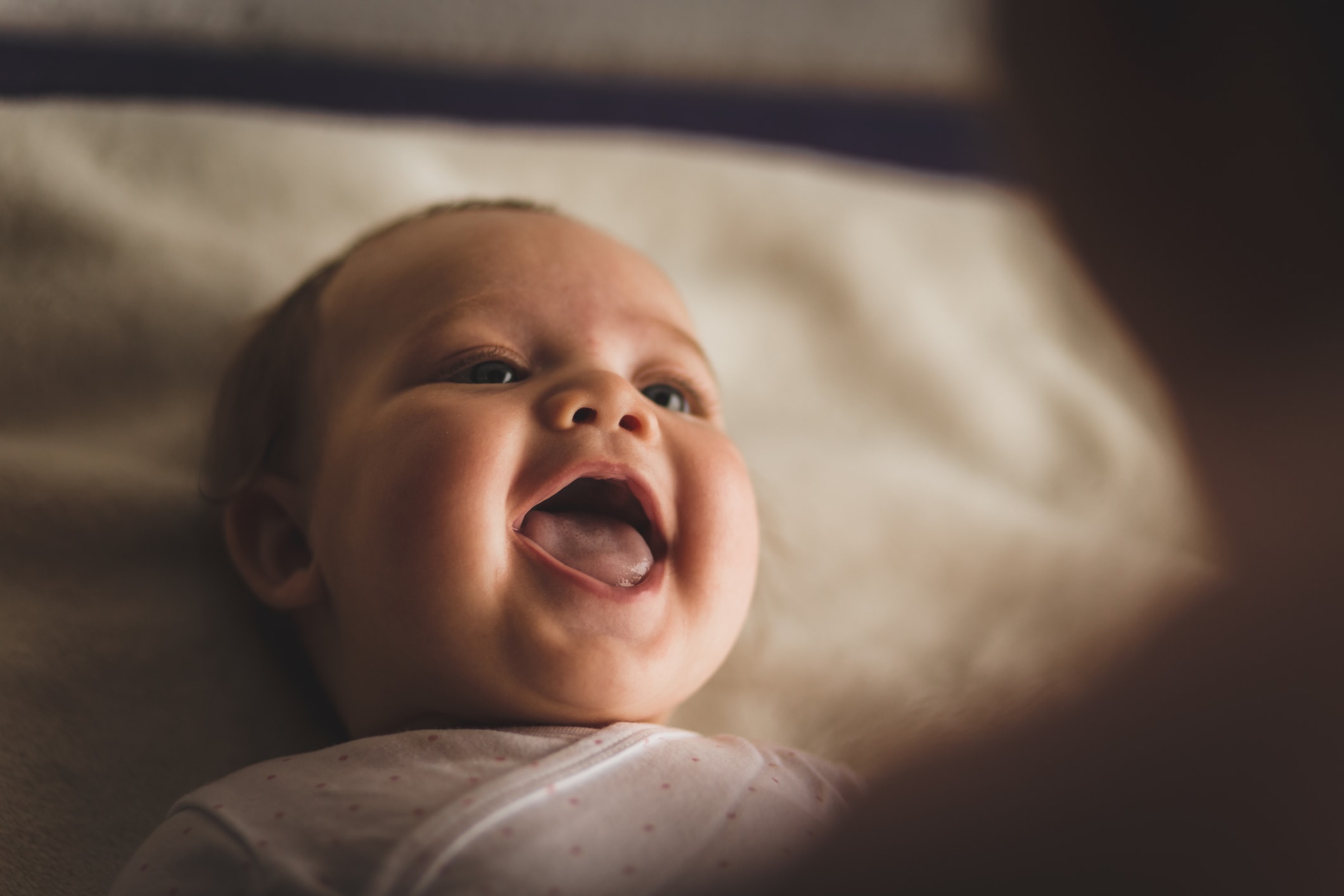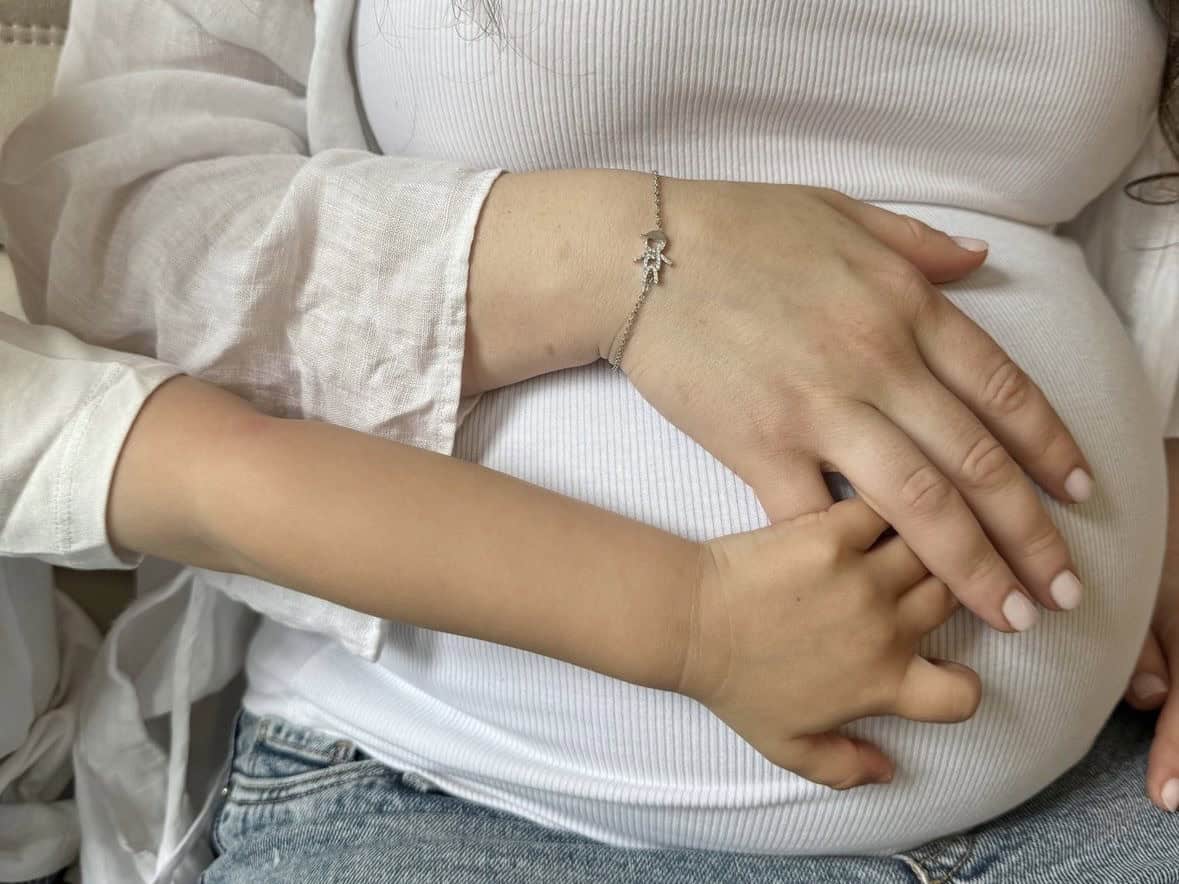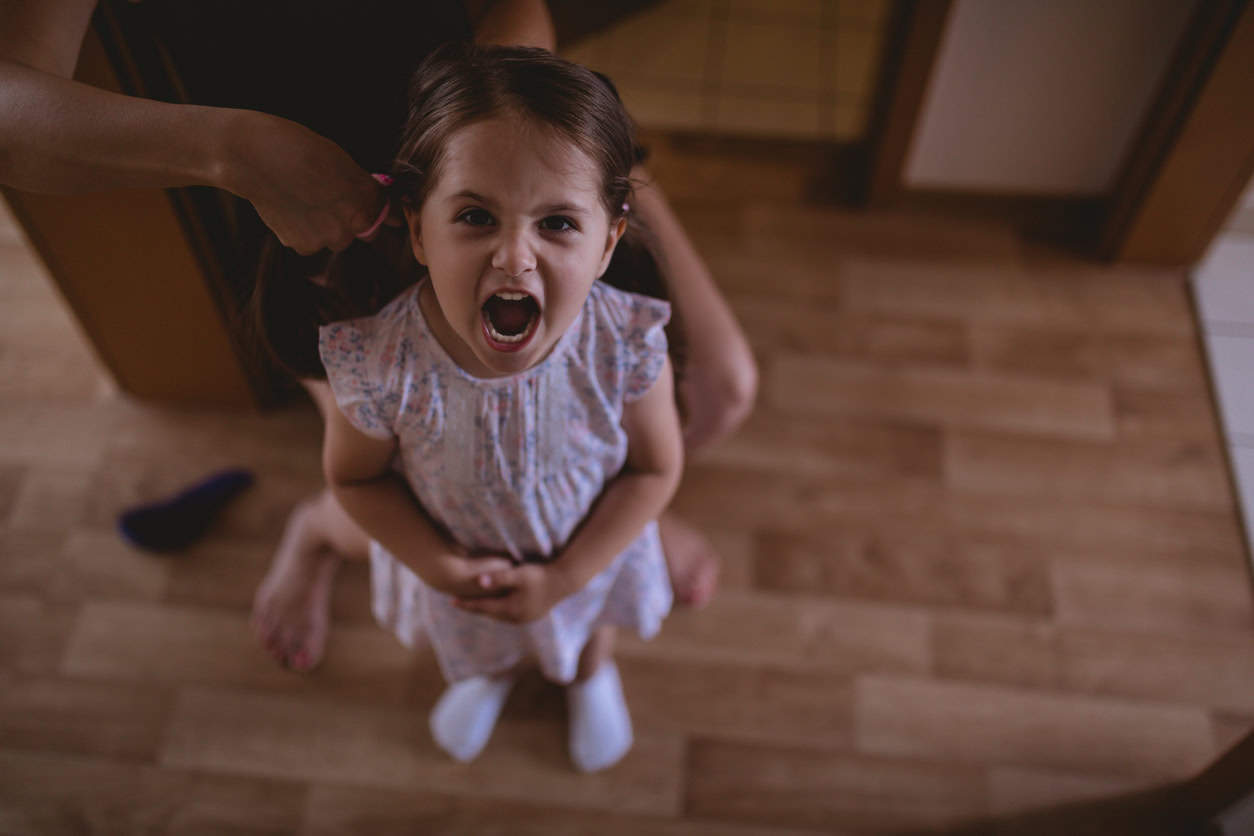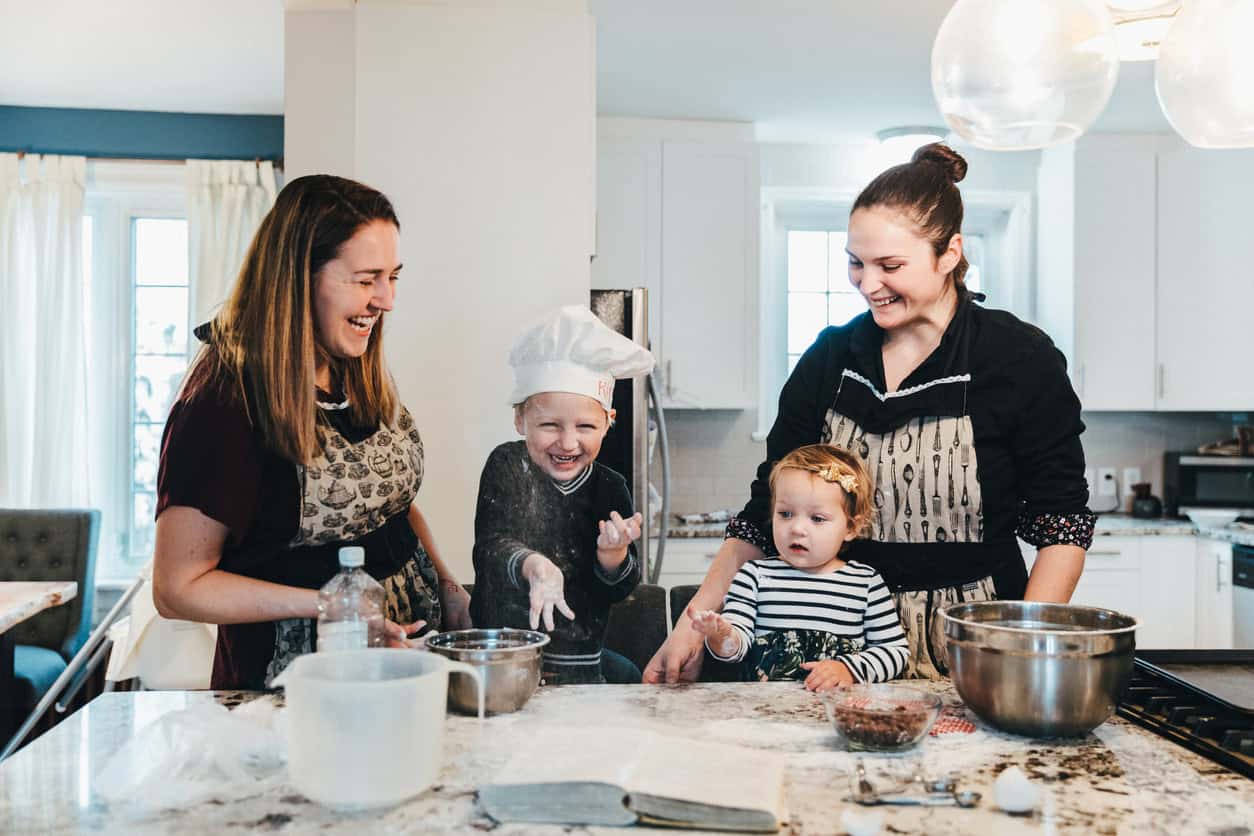For new parents, there’s no sound more beautiful than your baby’s first laugh. These adorable giggles reassure you that your child is happy and safe with you. A baby’s laughter is one of the most exciting milestones in a baby’s first year. So, when does a baby start laughing? This article explains when babies start giggling, why they laugh in their sleep, when to worry about your baby not laughing yet, and how to encourage them to laugh.
At 3-4 months of age, you may start to hear your baby chuckle.1 The Centers for Disease Control and Prevention (CDC) and the American Academy of Pediatrics (AAP) list laughter as a 4-month-old milestone and laughter as a 6-month-old milestone.2,9
Some researchers report that true infant laughter occurs in response to auditory stimulation (such as singing) at an even younger age (between 5 and 9 weeks)!3 Regardless of when a baby starts laughing, a baby’s laughter follows a predictable pattern in response to different types of sensory input. As they age, their laughter progresses in duration, frequency, and variety.4
When babies start to laugh, there are different reasons depending on their age and development. Here are typical patterns of baby laughter:1,3,4,5

Just before one year of age, babies may also start laughing in anticipation of laughter or funny events, not just when those events occur. At this age, babies may also start to engage in funny behaviors in an attempt to make you laugh too.5
When your baby starts to laugh, they may gain many benefits from laughing with you. Some of the interesting benefits include:
- Gluing: Making babies laugh (and laughing with them) may promote closer connections, stronger attachments, deeper intimacy, and more satisfying relationships.1
- know: Laughing babies demonstrate their ability to recognize that something is funny and to express their enjoyment. This is enough proof of their thoughts and consciousness.1
- Tension release: When babies are exposed to new stimuli, it can cause them physical and mental stress. Once babies realize that the new experience is safe, the built-up tension is released and they may feel a sense of relief, which they express with laughter.4
- communicate: Babies often start laughing long before they can communicate using gestures or words.1 Babies’ laughter tells their caregivers that they like whatever they are doing and that they should keep doing it or do it again.6
- pleasure: The mere experience of smiling and laughing can give babies a positive and pleasurable sense of well-being, and babies seek to recreate this feeling. Therefore, laughter is not only an expression of happiness, but also a cause of happiness!4
Babies laugh for a variety of reasons. But one of the most common ways to make babies laugh is through tickling. When babies can differentiate between “self” and “others,” they become ticklish because you can’t tickle yourself.6 When babies start to laugh, their first giggles are usually the result of positive and unexpected touch, such as tickling.1,4 Therefore, babies around 3-6 months old may become ticklish as soon as they start laughing.1,4
In a study of laughter in infants aged 2 to 12 months, parents were asked to make their babies laugh, and most started by tickling them. Parents of children aged 6 to 12 months can usually make their babies laugh by tickling them, often with success by 6 months of age.3 In fact, as babies begin to appreciate and understand other forms of humor (such as changing social and visual situations and incompatible objects) between 7 and 12 months of age, tickling becomes less effective at making them laugh. efficient.5

While tickling may be the go-to way to get your baby to giggle, there are many other ways to make your baby smile. To choose age-appropriate games and stimulation to make your baby laugh, refer to the chart on why babies laugh earlier in this article. Here are some other ideas:
For 4-month-olds, you can try tickling them, blowing raspberries on their bellies, blowing air into their hair, singing loudly, or making popping noises. Children as young as 5 or 6 months may be more likely to laugh at games that have social and surprise elements, such as peek-a-boo. For children aged 7 to 9 months, you might have your baby laugh in response to changing visual cues, such as shaking hair or flapping limbs. As your baby approaches one year old, they may start to understand that some things don’t go together, like an adult and a pacifier, and they may laugh at your folly for putting them together.1,3,4,5
When I was about 9 months old, I remember my baby laughing so hard at me jumping out of bed onto the floor! You never know what will make them laugh. You may have to get creative, but it’s fun to try – and sometimes a little embarrassing!
Remember, encourage your baby to laugh without feeling embarrassed. In one study, mothers struggled to make their babies laugh in a laboratory while an observer watched them. Babies laugh more easily at home, possibly because they are more comfortable and familiar there, but also because caregivers are more comfortable and uninhibited.3 If you’re struggling to get your baby to smile, remember these simple efforts and elements:3
- game: Games such as peek-a-boo and cake-shooting incorporate a variety of humorous elements that often make babies of all ages laugh.
- surprise: Experiment with unexpected, strange, or sudden sounds, sights, and movements, such as bumps or jolts.
- expected: When babies are waiting for something fun, happy, or exciting to happen, they may laugh in anticipation of happiness. For example, when you reach down to scratch their belly, try scratching the air. They might laugh before you touch them!
Sometimes, you may notice your young baby smiling or laughing in his sleep. This is thought to be spontaneous rather than a reaction to external stimuli.7 Sleepy laughter most often occurs during REM sleep and may be a reflex. During REM sleep, babies are very active and almost appear to be awake.7 Researchers aren’t quite sure why babies laugh in their sleep, but the phenomenon occurs in babies aged 0-2 months. A baby’s sleep laugh usually lasts about three seconds and includes both smiling and vocalizations.7

Although most babies start laughing between 4-6 months of age, they don’t all laugh at the same time or at the same things.2 There are many reasons why a baby may not smile yet or in some cases not smile, including:
- temperament: Every baby has a different personality and temperament. Some people may laugh more easily and appreciate humor early on. Others may be more serious and making them laugh may be more difficult.1
- develop: Laughter means more than facial expressions and sounds. Babies must be able to feel stimuli, identify different stimuli, and express that they are interesting to them. They may just not have integrated all of these skills into laughter yet.4
- Hearing or visual impairment: These sensory difficulties can prevent babies from seeing or hearing things that might make them laugh. However, one study reports that deafness does not impair non-verbal sounds such as crying and laughing.8
- Fear: A particular stimulus may make babies laugh in one setting and frighten them in another. For example, a baby may laugh when a parent tickles them, but may cry when a new person does it. If babies are already fussy, things that normally make them laugh may make them frustrated or crying. Babies may not smile at times, depending on their environment and sense of security.3
- Hypotonia: Low muscle tone can make it difficult for babies to smile. One study found that babies with the lowest muscle tone did not smile until they were 13 months old.5
If your baby is under 6 months old and doesn’t laugh yet, there’s usually nothing to worry about.2 You also don’t need to worry about what your baby is laughing at—these variables will change naturally as their cognitive abilities develop. Children with special needs may smile and laugh later than typically developing infants, but once they begin to laugh, they follow the same laughter triggering and development patterns.3
Waiting for your baby’s first laugh can be exciting, but it can also be stressful at times. Continue to interact with your child through caressing, vocalizations, and eye contact. Over time, you’ll discover their favorite triggers. Before you know it, you’ll be their favorite person to laugh at!




